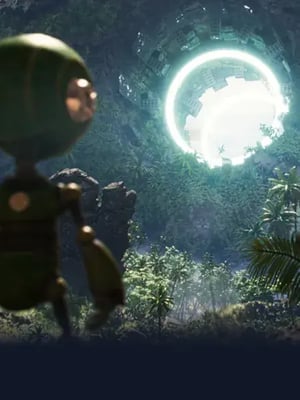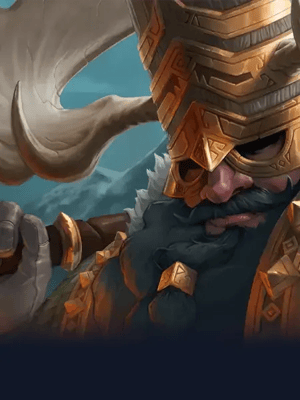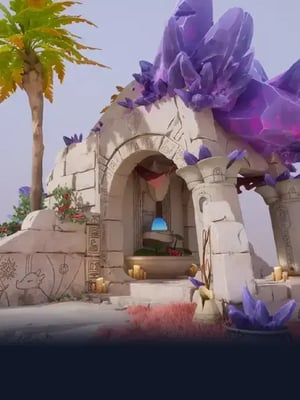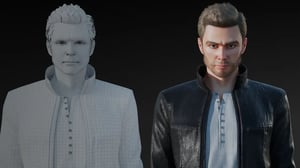
3D Character Artist
Student work by Joana Lelito
TABLE OF CONTENTS
What does a 3D character artist do?
3D character artists create digital 3D models of characters for films and video games. Models are often based on illustrations drawn by a concept artist.
In film, character artists create 3D characters that are integrated into live-action. Their work primarily takes place during the post-production process, but sketches and concept art will be developed from pre-production stages as part of the film or series’ production design.
In animated features, series, or shorts character artists develop and create the character art that is used throughout the production. They work closely with directors, writers, and design departments to bring the characters to life. Sophisticated character development and artistry are required to elicit emotion from drawn images.
In games, character artists work closely with creative and technical teams to drive the visual quality of the game and maintain a consistent character style. In the competitive gaming market players now expect high-standard graphics, it is up to the character artist to deliver on the overall artistic quality of the game. The processes are the same as in gaming, however as film has a linear structure, they will not incorporate interactive elements or behaviors.
3D character artist job description
Character artists transform 2D illustrations and concept art, or scans of live-action actors, into 3D models with a framework that can be rigged, anatomical limbs, and finished textures. This work is vital to the believability of the production as these elements need to fit seamlessly into the footage for the final product to be believable.
Role & responsibilities of a character artist in the film and games industry:
- Producing high-quality, anatomically feasible, photo-real or stylized CG character models in line with brief and/or reference material
- Interpret abstract ideas or concept art into the creation of compelling photo-real or stylized character
- Presenting work in a turntable style environment with acceptable lighting for progress reviews and approval (including scale reference)
- Ensuring consistency of UV mapping and polygonal subdivisions
- Facilitate the creation of high-quality photo-real texture maps
- Researching reference materials for aesthetics and genre of game, film or animation
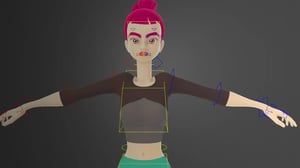
How much does a 3D character artist make?
The average salary of a 3D character artist is between USD $49,000 and USD $112,000. (Source: Payscale)
Skills required to become a 3D character artist
A 3D character artist role is not generally an entry-level position. While some junior positions are available in the industry, most character artists have years of character creation, sculpture, and design experience. A good way to break into this field is to learn 3D modeling and build up a portfolio of original 3D character work.
Film and game studios may look for the following skills in a 3D character artist:
- Experience in digital sculpting, modeling, UV mapping, texturing
- Excellent understanding of shading, lighting, structure, texturing, and silhouette
- Understanding of mesh topology and edge loops
- Knowledge of anatomy - proportions, muscle, and skeletal structures
- Ability to work from reference materials such as photography or concept art
What software and tools do 3D character artists use?
Character artists work in the virtual space using computer software but some artists many may have more hands-on, practical experience, which is always useful.
Character artists may need knowledge of a combination of the following software:

Maya is a comprehensive 3D animation software used for creating detailed models, animations, and visual effects. It's popular in film, TV, and game development for its powerful tools.
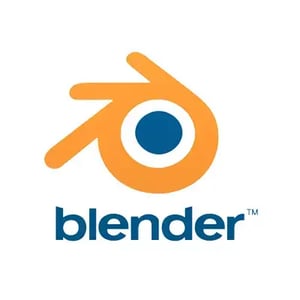
Blender is a free and open-source 3D computer graphics software tool set. It is used for creating animated films, visual effects, art, 3D-printed models, motion graphics, interactive 3D applications and virtual reality.

Unreal Engine is a 3D computer graphics game engine developed by Epic Games, first showcased in the 1998 first-person shooter video game Unreal

Maxon ZBrush is a digital sculpting tool that combines 3D/2.5D modeling, texturing and painting
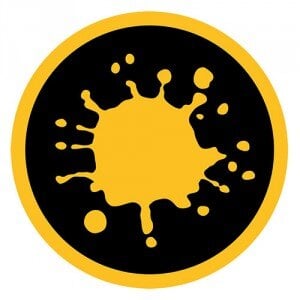
Mari® is 3D painting without limits, combining the power and performance to handle even the most complex assets with artist-friendly 3D paint tools, that make the most of your creativity.

Houdini is built from the ground up to be a procedural system that empowers artists to work freely, create multiple iterations and rapidly share workflows with colleagues.
A day in the life of a character artist
Character artists digitally build, sculpt, and detail 3D characters, working from concept art, real-world reference, and scans. Character artists help add substance to characters, often converting them from a 2D concept to something more tangible which can be actively manipulated and animated.
How to become a character artist
Increase your chances of getting hired with these strategies for success:
Download software
Try free 3D modeling programs like Blender, ZBrushCoreMini, or Houdini Apprentice. Otherwise, Autodesk Maya (industry standard) offers a free trial.
Build skills
Build the skills companies are listing on job sites. For more support, enroll in a reputable course. CG Spectrum’s courses include mentorship from 3D modeling pros and an industry-led curriculum.
Watch trends
Online tutorials, webinars, and events can help keep your skills fresh.
Network
Networking is vital. Familiarize yourself with the industry and build your community. Interact online and in real life with industry pros who might offer advice, insights, or job opportunities.
Intern
Internships at VFX or game studios can help you break into the industry. It’s one way to gain hands-on experience, network, and experience studio life.
Sell assets
Create and sell assets on Unreal Engine Marketplace or similar to gain exposure, get feedback, demonstrate skills to potential employers and collaborators, and make money!
Collaborate
Know a rigger or animator who’d like to bring your model to life? Collaborating with peers is fun and can produce polished work for your reel.
Join contests
Practice your skills and create assets for your reel by participating in contests and challenges on sites like The Rookies, ArtStation, and 3Dtotal.
Share work
Social media is great for showcasing work, building an audience, having your work shared by others, and seen by potential clients and collaborators.
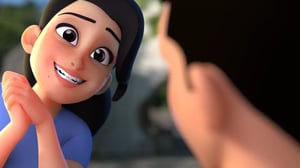
Ready to Start Your Film & Games Journey?
Download our course guide to see how we can help you on your pathway to your dream career.Tips to break into the character artist industry
Additional resources to help you get started as a 3D character artist for film and games:
- Read What is 3D modeling?
- Recommended reading list for 3D artists by CG Spectrum Mentor Bryan Mentor
- Check out Altruism Digital’s YouTube channel
- Watch How to sell your assets on Unreal Marketplace
- Download free assets on sites like Unreal Engine Marketplace, ProductionCrate, MegaScans,
AbientCG, Sketchfab, and TurboSquid and see how other people build their models - Use Anatomy for Sculptors’ free 3D écorché reference tool
- Join the Autodesk community and check out all their forums
- Blender also has a bunch of great communities you can join
- Explore ArtStation’s and 3Dtotal’s free modeling tutorials
- Visit the official Maya, ZBrush, and Houdini learning channels on YouTube
Demo reel tips:
- Tailor your reel to the studio and role you’re applying for
- Include scale reference to show your model is at the correct scale
- Where possible, show your model moving (e.g., via a turntable or rigged animation)
- If textured, render your model under different lighting conditions
- Use Vimeo for best video quality, plus you can update your video
- Embed your reel on a platform (like ArtStation) with high-res stills of your model’s best angles
- No studio experience: keep your reel < 1 min. 1–2 years experience: < 2 mins Work in progress is fine, but only include your best models
- Ensure music doesn’t distract from your work
- Double-check for errors; then check again
- Get feedback from at least 3 mentors or industry pros before finalizing
- Include reference footage, breakdowns, and credits where relevant
- Specify if your model is for animation, VFX, or games (each has different requirements)
- Share your reel on your website, ArtStation, LinkedIn, and other social channels
- Include any production experience

Industry Pathways
Bryan Bentley, 3D Modeling Curriculum Manager at CG Spectrum, shares how he broke into modeling almost by chance, from landing his first internship at the Jim Henson company to working at ILM on the Oscar-winning film Rango. Throughout, Bryan has nurtured his love for education and life-long learning.
